In the first of a new series on key clients, Emily Wright meets the men to know at BAA to find out where the opportunities are and what the airport operator is like to work for in the post-framework era
Just over a year ago, BAAŌĆÖs Steven Morgan shocked the industry by blowing apart the clientŌĆÖs multibillion-pound framework for major projects.
Only 120 days into his role as capital projects director, Morgan opened up all projects over ┬Ż25m to open competition.
He told ║├╔½Ž╚╔·TV that his method would ensure that he got the ŌĆ£A-teamŌĆØ, that using an entirely frameworks-based system to procure work was akin to a ŌĆ£corporate beauty pageantŌĆØ and that it simply didnŌĆÖt give clients best value for money.
In BAAŌĆÖs case at least, it looks as though he was right. Twelve months on, the savings are beginning to roll in: ┬Ż300m so far. Not surprisingly, other major clients, including government departments and quangos, have approached him to discuss emulating the BAA model.
This might alarm those, such as Constructing Excellence, who last year raised concerns that MorganŌĆÖs approach might result in an adversarial procurement system. Morgan rebuffs this, arguing that getting value for money does not mean going back to the bad old days. He adds that the framework system has not been abolished completely - it is still used for projects worth less than ┬Ż10m and a selected number of framework contractors are invited to tender competitively for projects between ┬Ż10m and ┬Ż25m.
His other technique for reassuring the industry has been to point to the benefits he can offer contractors: incentive schemes, 6% margins, ┬Ż100m of spending on construction every month and building plans worth about ┬Ż4bn over the next 10 years. And all this money is available to everyone, rather than a select few on frameworks.
If you want to win some of that work, Morgan is not the only person you need to get to know. In the first of ║├╔½Ž╚╔·TVŌĆÖs Meet the Client features, we talk to the key players on his team - from the first point of contact for suppliers to the man in control of the next chunk of spending.
Work up for grabs
Eastern campus (T2)
T2a ┬Ż700m to be tendered this year and next T2b expected to start in 2014 with about ┬Ż1bn budget
Western campus (T3, 4 and 5)
┬Ż250m of work still to be tendered out of a ┬Ż685m budget up to 2013. Most will be refurb contracts, tendered in the next six to 12 months
2014 and beyond
Another five-year work period begins, with an anticipated ┬Ż4bn budget, divided between the eastern and western campuses
BAA in numbers
- Heathrow capital investment 2008-2013 ┬Ż4.2▓·▓į (baggage ┬Ż1bn, infrastructure ┬Ż800m, eastern campus ┬Ż2bn, western campus ┬Ż500m)
- Size of Heathrow campus 1,227 ha
- Number of BAA staff at Heathrow 4,385
- Total employment at Heathrow 72,000
- Total jobs sustained by Heathrow across the UK 170,000
The first point of contact

Ferroussat is probably the most important person to know for new firms who want to work for BAA. The 48-year-old former QS joined MorganŌĆÖs team seven months ago in the new role of ombudsman. He was previously head of supply chain on Heathrow Terminal 5.
Could you give a brief overview of your role?
I am here to help new and existing members of the supply chain work for us. I am available for one-to-one meetings to discuss opportunities.
I try to get to know each firm that approaches me to then work out whether there is a job suitable for them or, for small firms, whether they would match up with a larger contractor.
Your role was created by Steven Morgan. What has the reaction been from the industry?
It has been excellent as it makes us far more accessible. In the last six months I have been approached by 200 to 250 suppliers, from small scaffolders to large contractors like Bechtel.
What percentage of companies who approach you end up winning work?
ItŌĆÖs hard to say at the moment as I have only been in the job for seven months and winning work after an initial meeting usually takes longer than that. But in terms of second tier firms winning work through first-tier contractors - 10 new suppliers have so far found opportunities after coming through me.
What can firms do to give themselves the best chance of finding work?
Make sure they understand what BAA stands for in terms of standards and a commitment
to health and safety. They really need to demonstrate an understanding of working in a fully operational airport too - or at least make themselves aware of these sorts of issues and demonstrate how they would deal with it.
How can someone contact you?
Email me at ombudsman_office@baa.com. I aim to reply to every email within 48 hours.
The quick-fire round
I never leave the house without ŌĆ” keys.
The worst job I have ever had was ŌĆ” cleaning out my MumŌĆÖs drains last weekend.
I am terrified of ŌĆ” swimming the Atlantic. IŌĆÖm not planning to do it, itŌĆÖs just something I am pretty sure would terrify me.
The big spender

Wilbraham is well known in the construction industry as, before he took on his current role earlier this year, he was project leader on T5. The 49 year old plans the forward workload and budget up to 2020, and oversees current works to ensure they meet the specifications of the airlines that use BAA airports.
What are your main responsibilities?
A major part of my role is working out what work we are doing at Heathrow over the next 10 years. It is my responsibility to make sure we know where the overall Heathrow masterplan will take us and what developments we want to do.
What stage in that process are you at?
We are consulting with the customer - the airlines - and weŌĆÖll come up with a number of things that we want to do and work out the priorities. The likelihood is that weŌĆÖll focus on the second phase of the T2 building (phase one is under way and worth ┬Ż1.2bn. The second phase is expected to be worth about the same amount). We are also looking at updating T3 and T4 as well as resurfacing the two runways. All great opportunities for the construction industry.
Will the budget for this work be the same as the current five-year period - about ┬Ż4.2▓·▓į?
We are regulated in five-year chunks and our budget is agreed in advance with a regulator and the airlines. We havenŌĆÖt agreed anything yet but it will be in a similar region.
What do you think of the industryŌĆÖs reaction to Steven MorganŌĆÖs shake-up at BAA?
Over the past two years, a lot has changed. There isnŌĆÖt so much work around and competition has become more intense. So our response has been to invite more people to compete. I can see why there was a split reaction initially but, since then, the people I have spoken to on the supply side think itŌĆÖs a good thing. It gives them the opportunity to prove they are the best. It also allows those who have been knocking on the door for a while to come and work for us. And thatŌĆÖs very important - introducing new players. It is key that we keep the supply chain fresh so firms continue to want to work for us while, at the same time, having to work very hard to prove they are the best choice.
WhatŌĆÖs next on the horizon?
An example of a great opportunity will be the car park and roads contract at T2, which is worth ┬Ż90m and is about to go out for tender. The next big job after this body of work will probably be the second phase of T2.
There is also lots of planned maintenance like resurfacing both runways, which will be huge jobs. This is all stuff coming up in the next 10 years and we are drawing up the plans as we speak. It is a great example of how much work there will be for new firms, as well as companies we are familiar with.
The quick-fire round
I never leave the house without ŌĆ” saying goodbye to the family.
The worst job I have ever had was ŌĆ” bottling wine in France. I was 18 and was just putting bottles onto a conveyer belt. I even took up smoking to get more breaks.
I have never ŌĆ” run a marathon.
I am terrified of ŌĆ” snakes.
The fixer

LivingstoneŌĆÖs role is to make sure that projects remain on time and within budget. The 48-year-old has a background in energy, having worked for Morgan at Sellafield from 2002-06. He spent 10 months as head of programme management for the BBC on its Manchester Salford Quays project before joining BAA 12 months ago.
Your role is pretty important, keeping everything on track. How do you keep on top of it?
My job is to make sure we are delivering what we say weŌĆÖll deliver. To do that, I have to make sure we have an efficient and effective relationship with the supply chain and that we set the right tone at the top of the organisation.
What do you mean by ŌĆ£set the right toneŌĆØ?
We have to demonstrate that once we have agreed to certain commitments, we wonŌĆÖt lower standards. We provide very clear briefs and my job is to make sure everything is being followed. The challenge is to intelligently hold the supply chain to account on the commitments they have made to us in their bid. We use techniques like value analysis to make sure weŌĆÖre getting the best value for money. We ask supply chains to provide information on their schedules to show that what they are proposing is deliverable and has been risk assessed. Then we can monitor, on a monthly basis, what they said they could deliver and whether they are on track.
We have delivery teams who go out once a week on to the sites to see whatŌĆÖs going on. Things shouldnŌĆÖt all be done from ivory towers
So is it you personally that does that monthly monitoring?
Yes. We have delivery teams who go out once a week on to the sites to see whatŌĆÖs going on. Things shouldnŌĆÖt all be done from ivory towers. Then all the information gets passed on to me and we have a major project delivery review once a month when I meet the relevant people on the delivery teams and supply chain to talk through where everything is at and make a forward plan.
What if things arenŌĆÖt where they should be?
There are challenges with any project or programme. When there are issues, we hope the supply chain is able to rectify the situation without too much involvement from us, just support. We donŌĆÖt like to get too deeply involved, otherwise it can affect them negatively. We feel we should allow them the freedom to deliver a solution to the problems where possible. In plenty of cases, contractors are really motivated by this and have been able to transfer it into delivery capabilities, including problem solving.
Do you understand why some people in the industry are concerned that BAAŌĆÖs approach to procurement is overly aggressive?
It has been like any change programme. It went through a spell where there was a sharp intake of breath but now everything has been properly explained in depth, there is much wider acceptance. I know that last year people had their doubts, but we are not trying to be adversarial. We are still using traditional contracts like NEC3 and not much has changed other than the fact that we are more transparent. WeŌĆÖre clear from the start that we have high standards and we want the best, but I donŌĆÖt see there being anything aggressive about that. And weŌĆÖre seeing great levels of performance.
The quick-fire round
I never leave the house without ŌĆ” my suit on.
The worst job I ever had was ŌĆ” working in the shipyard when I was 16. I cried.
I have never ŌĆ” intentionally misled or lied to anybody.
I am terrified of ŌĆ” spiders.
The man in the east

Pickard, 45, has been with BAA since 2002. Formerly head of infrastructure at BAA, he is now managing the delivery of the new ┬Ż1.2bn T2.
What stage is the T2 project up to now?
We started in 2007 and expect to be finished by the back end of 2013 - we have just started construction. Now weŌĆÖre involved in the main build, weŌĆÖre doing about 200 truck movements a day in terms of excavating material out - things are beginning to move fast. The first structural pour happened in June and the steel frame will start being erected next month.
The project goes on until 2013, so what sort of opportunities are still up for grabs?
The terminal building is worth about ┬Ż1.2bn in total and the main build section is worth ┬Ż820m. About ┬Ż700m of that will be competitively tendered through the second tier. So far we have tendered four main packages - the substructure, superstructure, roof and facade. The car park is yet to be tendered and is about to go out to the Official Journal and is worth about ┬Ż90m. The specialist works will be individually tendered too, things like network and radio integrator roles, over the next eight to 10 months. Then there are all the specialist fit-out elements - all the floors, the glass, internal partitions, lifts, escalators. So there are still lots of elements yet to be procured.
ItŌĆÖs worth remembering that this is just phase one of the T2 development. We hope phase two will kick off in 2013/14
It seems that, at this stage, the available work will mostly be for second-tier suppliers?
At this stage, yes as we have tendered the main contracting role out to HETCo - a joint venture between Ferrovial Agrom├Īn and Laing OŌĆÖRourke. But there are opportunities through these main suppliers that are worth hundreds of millions of pounds. We are looking to have most people appointed on jobs by 2011.
Plus, itŌĆÖs worth remembering that this is just phase one of the T2 development. We hope phase two will kick off in 2013/2014 and bring a whole new set of opportunities.
What will the value of phase two be?
I donŌĆÖt know exactly but I imagine it will probably be equal to phase one.
What can we expect to see over the next year or two on this scheme as construction starts in earnest?
We have some milestones to hit over the next year. August is the steel frame, September is about the M&E plant frame and we will have a weathertight building by January 2012. This will allow us to crack on inside and get the fit-out finished by the start of 2013, ready for testing so we can open by the end of that year. We will have a peak labour force of about 3,000. We currently have 450 on site.
The quick-fire round
I never leave the house without ŌĆ” my BlackBerry. And some positivity because some days are really hard.
The worst job I have ever had was ŌĆ” respraying cars when I was 17.
I am terrified of ŌĆ” heights.
The man in the west

Foster, 42, took on his role in September last year and looks after the ┬Ż685m terminal infrastructure across the western campus at Heathrow. This includes the redevelopment of T3 and T4, and the construction of a ┬Ż340m satellite pier for T5.
What projects are under way and in the pipeline on the western campus?
There is an interesting mix as we have mega-projects like T5c - the extension to T5 that will go live in the middle of next year. It is worth around ┬Ż350m and will effectively be a little island site in the middle of the airfield. Then this is a big year for T3. ItŌĆÖs a few years old now and we need to beautify the terminal. T4 is another big piece of work as we are moving airlines into it. It will include lots of smaller, refurbishment projects like T3.
How much of your ┬Ż685m budget is still up for grabs?
As of last Christmas, there was a quarter of a billion to spend. ItŌĆÖs a big sum.
For the western campus, everything is going to happen over the next year. A good part of the works will be out within the next six months - the majority of them will be refurbishment works
Which projects will go out for competitive tender, and when?
For the western campus, everything is going to happen over the next year. A good part of the works will be out within the next six months - the majority will be refurbishment works. Whether these packages are tendered externally or to the frameworks completely depends on their value. But what I would say is that this part of the campus is at its peak at the moment so there are some big jobs in the pipeline to be placed in the Official Journal over the next six months.
What are you looking for from new companies?
My two words would be lean and agile.
Lean because we need to be very specific about what we want and we need people who can deliver us value for money. Agile because we are fast moving and we will go through change.
The quick-fire round
I never leave the house without ŌĆ” my BlackBerry.
The worst job I have ever had was ŌĆ” repairing a runway.
I have never ŌĆ” done a bungee jump.
I am terrified of ŌĆ” big spiders.






















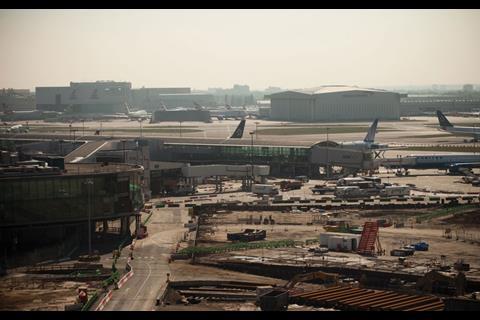
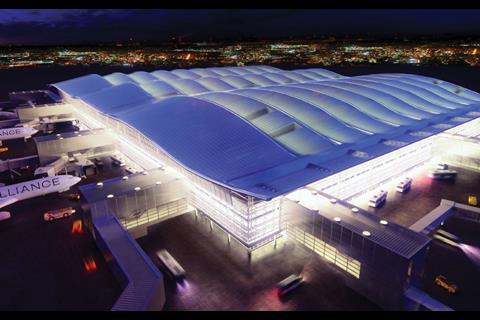
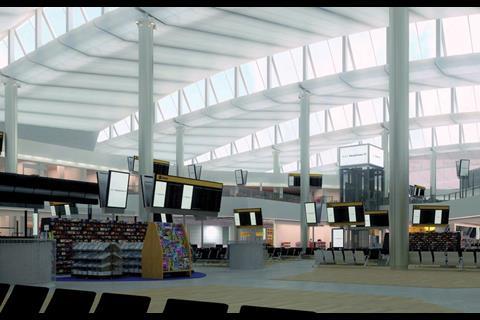
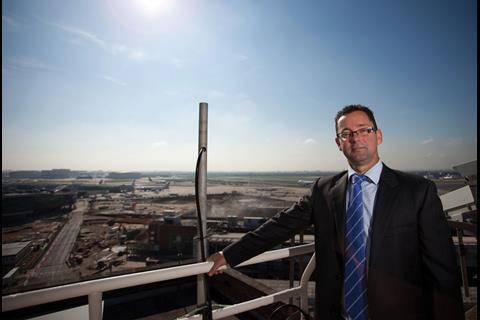
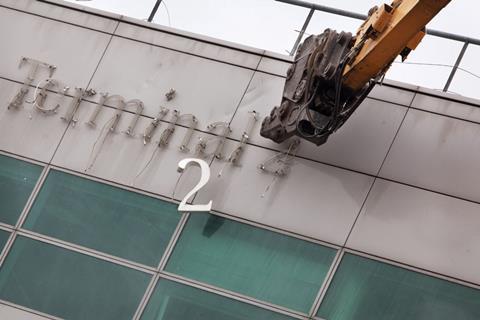






No comments yet